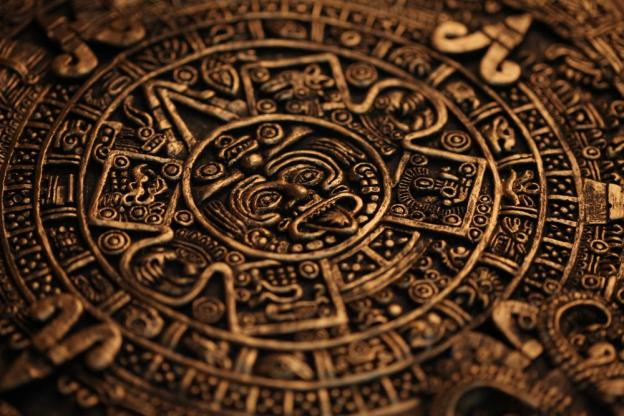
The world is not going to end on December 21. No, not even according to the Mayan calendar. And especially not according to the awesome newly uncovered Mayan calendar — the oldest known Mayan calendar in existence — which was recently discovered by Boston University archeologist William Saturno.
First glimpsed by an undergraduate student of Saturno’s in 2010, this new Mayan calendar was found buried at a well known Mayan archeology site in Guatemala. After first dismissing the value of the bit of paint spotted by his student, Saturno later went back to record the discovery, regardless of whether it had value.
What Saturno found turned out to be a well-presevered mural that includes the oldest known Mayan calendar to date. And just like the Maya Long Count calendar, which serves as the basis for the apocalypse myth, this calendar extends indefinitely into the future.
“The Mayan calendar is going to keep going for billions, trillions, octillions of years into the future,” University of Texas archeologist, author, and Maya expert David Stuart told LiveScience. “Numbers we can’t even wrap our heads around.”
In case you’re stumbling upon the Mayan doomsday nonsense for the first time, here’s the gist of it: The Mayan calendar is broken down into “baktuns” (or “b’ak’tun”), each of which equals 400 years, or about 146,000 days. According to Mayan legend, the current world — the one in which we are all currently living — was created over 12 baktuns ago. At the end of the 13th baktun, the world as we know it will cease to exist. December 21, 2012 — the winter solstice — is that day.
Of course, many scientists with real understanding of ancient Mayan culture and language have for decades tried to explain that, no, the end of the 13th baktun does not literally mean the end of the world. In fact, they say, not even the Mayans themselves believed such silliness. The end-of-world myth was actually concocted by Christian missionaries. And some experts say that the end of the 13th baktun is actually December 23, not December 21.
The newly discovered Mayan calendar has cycles of time recording 17 baktuns, rather than the standard 13. This and other details, which Saturno describe in this week’s issue of the journal Science, should be all anyone needs to stop their urge to stock up on canned food and ammo.
To check out photos of the newly discovered calendar, click here.
Image via Lia Koltyrina/Shutterstock


